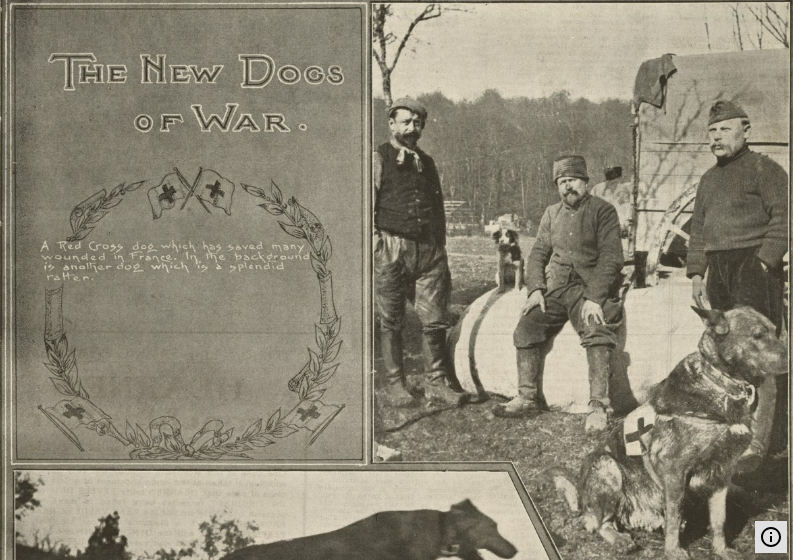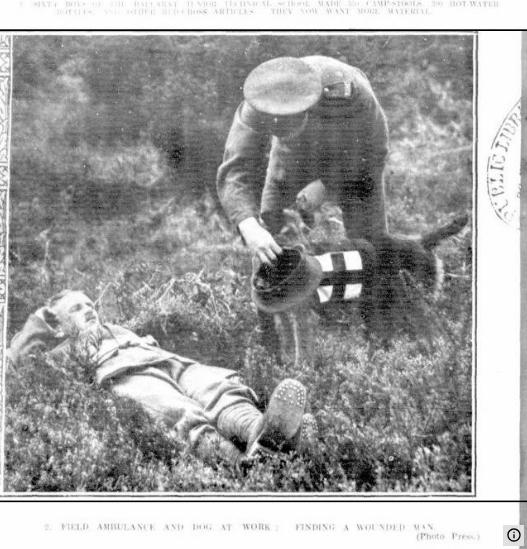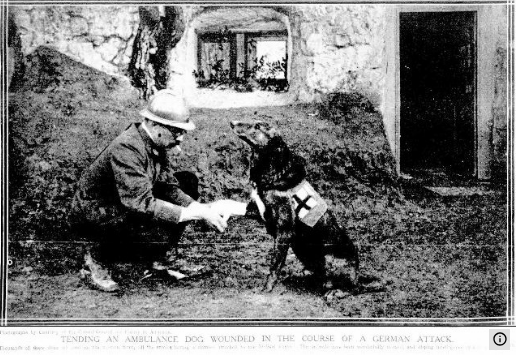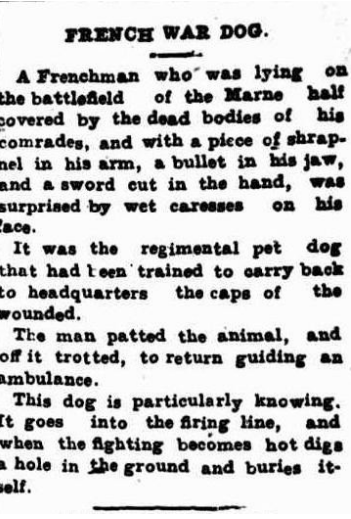The Brave Mercy Dogs of WWI: Heroes on Four Legs
Throughout history, dogs have played a vital role in human lives, even in times of war. During World War I, these loyal companions were trained to assist on the frontlines, taking on duties as varied as delivering messages, hauling supplies, and even rescuing wounded soldiers. Among the most remarkable of these war dogs were the “mercy dogs,” also known as casualty or ambulance dogs. Their mission was simple but profound: to find injured soldiers and provide comfort or assistance, often saving lives in the process.

The Origins of Mercy Dogs
Mercy dogs were first used by German forces in the 19th century, and their reputation for locating and comforting the wounded quickly spread. By the time WWI began, countries such as France, Italy, Austria, and Germany had developed sophisticated programs to train these incredible animals. Soon, they were a crucial part of most European armies, including the British Allied forces.
The training these dogs received was extraordinary. They were taught to ignore the dead and enemy soldiers, to recognize hand signals, and to bury themselves or freeze if they encountered enemy fire. German Shepherds and Boxers were popular breeds due to their intelligence, loyalty, and strong physical capabilities.

Life-Saving Work on the Battlefield
Once trained, mercy dogs were sent into the chaos of the battlefield to locate wounded soldiers. Their keen sense of smell allowed them to find men hiding in bushes, ditches, and the mud, places where they might otherwise have been overlooked. Equipped with a vest bearing the Red Cross symbol, these dogs carried first aid supplies, water, and sometimes liquor to the injured. Those soldiers who could walk were led back to safety by the dogs, while others would have their location reported back to medics by the animal.

There are countless stories of mercy dogs going above and beyond to save lives. Some even dragged wounded soldiers to safety or carried small items of clothing back to their handlers as proof they had found someone in need. One such dog, Prusco, reportedly saved a hundred men in a single battle, while another, Captain, located 30 injured soldiers in just one day.
Companions in Life and Death
Mercy dogs not only helped the injured but also provided comfort to those whose wounds were too severe to survive. These dogs stayed with mortally wounded soldiers, offering a steady and warm presence in their final moments. In the loneliness and horror of no man’s land, these loyal companions ensured that soldiers didn’t die alone.

Unforgettable Acts of Bravery
The impact of mercy dogs during WWI was staggering. It is estimated that 10,000 dogs served in this role, saving thousands of lives—over 2,000 in France and 4,000 German soldiers. Their bravery, loyalty, and devotion to the soldiers they served made them national heroes, proving that even in war, the bond between humans and dogs remains unbreakable.
While many mercy dogs did not survive the war, their legacy lives on. Their courage and commitment remind us of the remarkable ways in which animals can touch and change our lives, even in the darkest of times.



